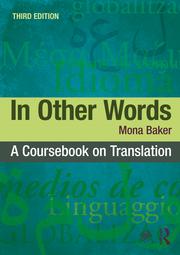The following extract is taken from the excellent In Other Words by Mona Baker. The book is about translation, but much of it is both useful and interesting to interpreters and student interpreters.
“Links signal the way the speaker wants the listener to relate what is about to be said to what has been said before“
In Other Words, Mona Baker, Routledge, 1992 (3rd edition 2018)

(In the extract below I have added square brackets to add an expression that is more relevant to us as interpreters, for example “reader [listener]”)
6.3 Conjunctions
Conjunction involves the use of formal markers to relate sentences, clauses and paragraphs to each other. Unlike reference, substitution and ellipsis, the use of conjunction [links] does not instruct the reader to supply missing information either by looking for it elsewhere in the text or by filling structural slots. Instead, conjunction [links] signals the way the writer [speaker] wants the reader [listener] to relate what is about to be said to what has been said before. Conjunction [links] expresses one of a small number of general relations. The main relations are summarized below, with examples of conjunctions which can or typically realize each relation.
a. additive
and, or, also, in addition, furthermore, besides, similarly, likewise, by contrast, for instance;
b. adversative
but, yet, however, instead, on the other hand, nevertheless, at any rate, as a matter of fact;
c. causal
so, consequently, it follows, for, because, under the circumstances, for this reason;
d. temporal
then, next, after that, on another occasion, in conclusion, an hour later, finally, at last;
d. continuatives
now, of course, well, anyway, surely, after all,
A number of points need to be borne in mind here. First, the same conjunction may be used to signal different relations, depending on the context. Second, these relations can be expressed by a variety of means; the use of a conjunction is not the only device for expressing a temporal or causal relation, for instance. In English, a temporal relation may be expressed by means of a verb such as follow or precede, and a causal relation is inherent in the meanings of verbs such as cause and lead to. In fact, a language user will often recognize a semantic relation such as time sequence even when there no explicit signal of such a relationship exists in the text. Third, conjunctive relations do not just reflect relations between external phenomena, but may also be set up to reflect relations which are internal to the text or communicative situation. For instance, temporal relations are not restricted to sequence in real time; they may reflect stages in the unfolding text. A good example is the use of first, second and third in this paragraph.